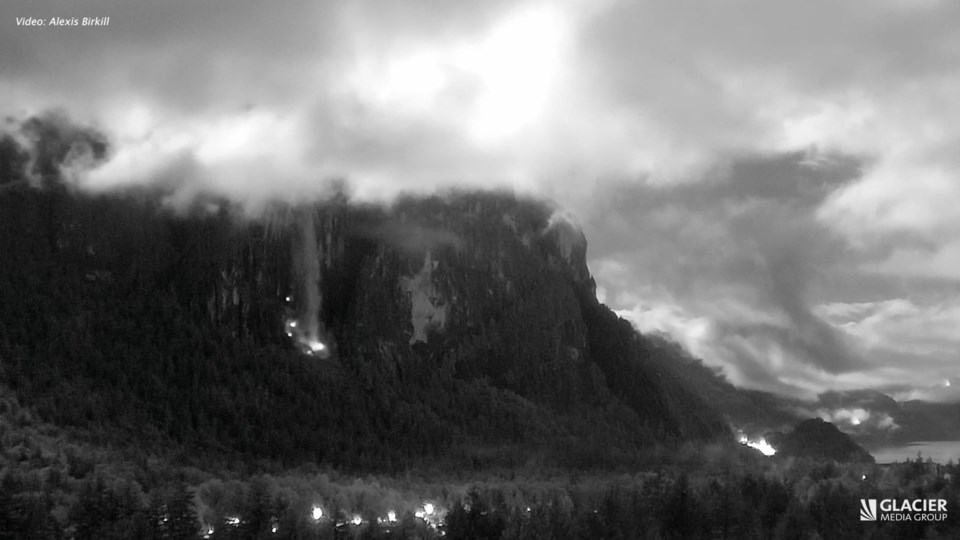I wanted to raise some concerns I had while reading the Sept. 28 article regarding the early morning rockfall off St’á7mes Siyám Smánit.
Most importantly, the article appears to miss an opportunity. The rich oral history and traditional knowledge held by the stewards of this unceded traditional territory are not mentioned once in this article.
The Sḵwx̱wú7mesh Úxwumixw, as the rightsholders and stewards of this land, have answered the question posed when this article was first published: “Is a rockfall off the Stawamus Chief a big deal?” (Early headline, later changed when story updated.)
To ask this question to recreationalists, geoscientists, the provincial agency (BC Parks) but not include Sḵwx̱wú7mesh perspective feels unsettling to me. To update information that climbing routes have been affected, and the roads have not, has me feeling like something is missing. Whether the rockfall is serious enough to affect infrastructure or recreational access offers a restrictive view of the potential impacts this rockfall could have on the community, the land itself, and the other living creatures that call this land home.
I would be interested in asking the community: What if the rockfall is not only “...large enough to be alarming,” but tells another story entirely?
On the week of National Day for Truth and Reconciliation, I am often asked (as well as asking) “What more can I do to demonstrate my willingness to move forward as a community towards honouring Sḵwx̱wú7mesh Úxwumixw as stewards of this land?”
Is it possible to move towards reconciliation if we do not include the perspective of Sḵwx̱wú7mesh Úxwumixw when asking, “Is a rockfall off the Stawamus Chief a big deal?”
Reconciliation does not mean seeking out unsolicited advice or demanding free exchanges of traditional knowledge. Oral history is a telling of history and sharing of culture. I would consider it to be an honour and a great gift to receive them.
On March 5, 2020, an opinion piece in The Squamish Chief by Chelachatanat is a sharing of that gift, and I hope we can honour it. The article offers an answer to this article’s question, four years before it was even asked.
Chelachatanat writes: “Do you know the Squamish legends of the Stawamus Chief? I was born and raised at the base of the St’á7mes Siyám Smánit. Living underneath it, we are in the shade for the majority of the day. For me, and many Squamish people, besides a mecca for climbing and hiking, the Stawamus Chief is a messenger. When a rock falls from the Chief, for example, depending on the peak, it warns us, of who will come to pass—die.”
On this week of National Day for Truth and Reconciliation, I implore us to not just bear witness and listen, but to also use our voice.
Not one of the individuals interviewed in the article on Sept. 28 noted, “...perhaps there is no immediate danger to a rock falling off St’á7mes Siyám Smánit, but I wonder what Sḵwx̱wú7mesh Úxwumixw might have to say about it?”
Now, I hope, if a rock falls off St’á7mes Siyám Smánit and we are asked if it is “a big deal” all of us who have read Chelachatanat’s story can say something different: Sḵwx̱wú7mesh Úxwumixw, and the people who have lived in “the shadow of the mountain” longer than it was ever called Valleycliffe have something to say about that.
Kyle Horvath
Squamish



